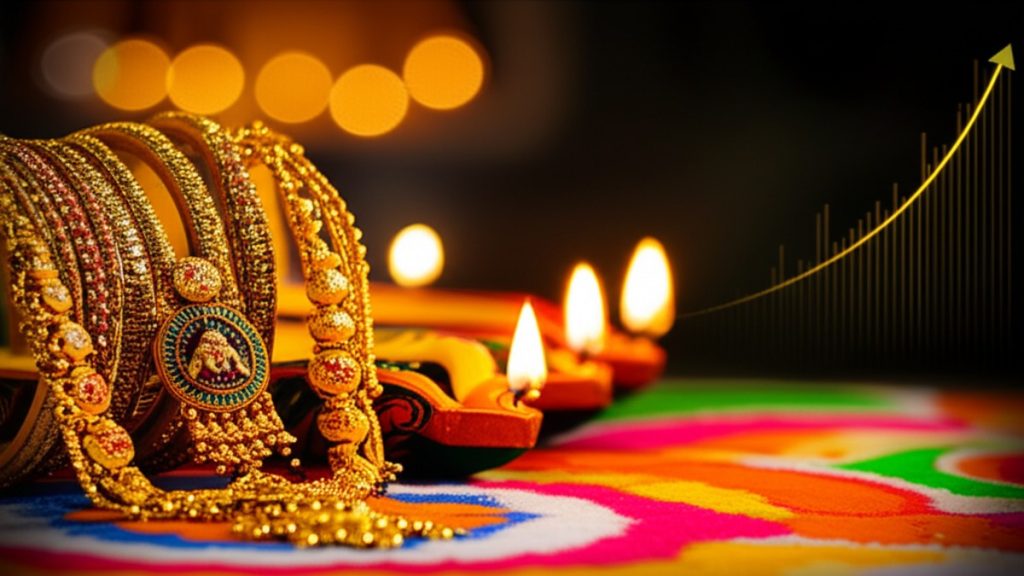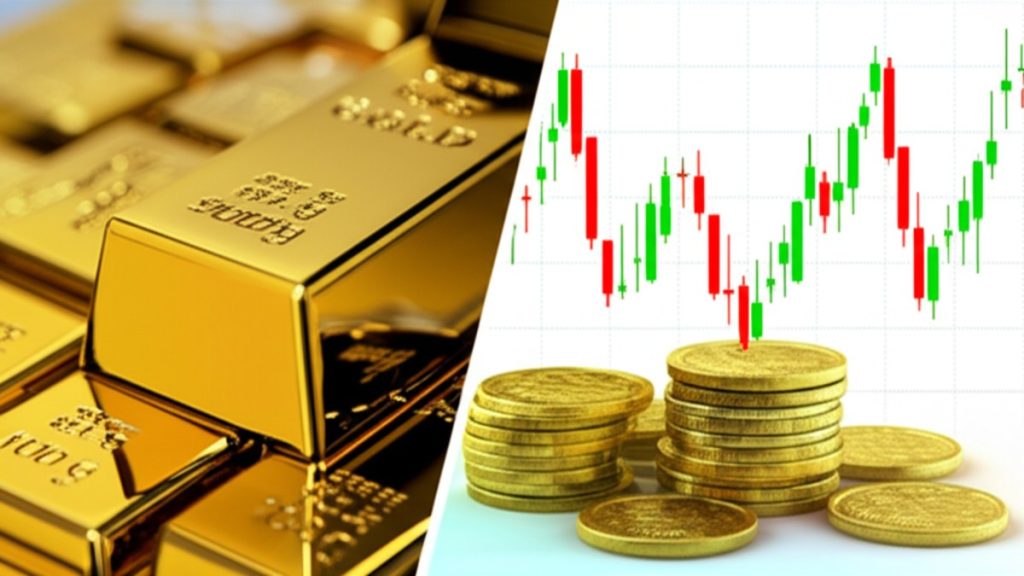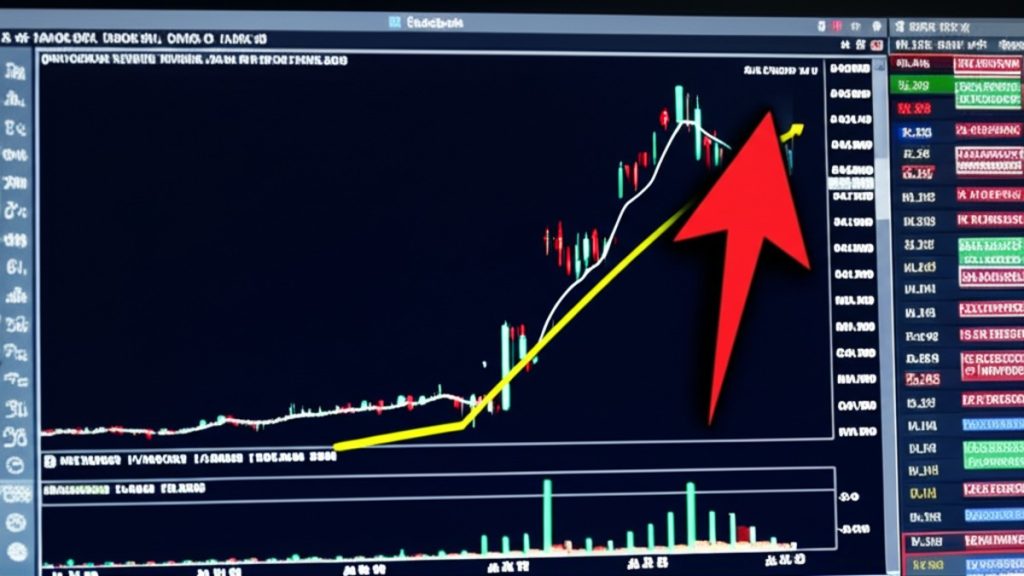
The aroma of traditional sweets and the glow of Diwali lights usually signal a time of joyous celebration and, crucially, a peak in gold buying. However, this year, the festive fervor is tempered by a sharp, upward trajectory in the precious metals market. The gold price today is soaring on commodity exchanges and local markets alike, leaving both consumers and jewellers concerned about affordability and availability. This significant hike in the today gold rate comes at the most critical time for the Indian gold industry, prompting warnings of a potential supply crunch that could disrupt purchases during the auspicious festival of lights.
The current market volatility is a confluence of robust domestic demand meeting challenging global economic headwinds. The traditional safe-haven appeal of the yellow metal is being reaffirmed, leading to a strong, sustained rally. For many buyers, the question is no longer if they should buy, but when and at what price they can secure their festive investment.
Key factors driving the market sentiment:
- The today gold rate is receiving significant support from heightened geopolitical tensions and global inflation worries, pushing up international prices.
- Record domestic demand, typically seen around Diwali and the wedding season, is stretching the supply chain, leading to warnings from major Indian jewellers.
- The surge in the gold price today is mirrored by a similar upward movement in silver rates on the Multi Commodity Exchange (MCX), indicating a broad rally in precious metals.
Why the Gold Price Today is Hitting New Highs
The sharp rise in the gold price today is not an isolated event but rather the result of powerful forces at play across international finance and domestic consumption. The simultaneous pressure from global market movements and India’s unique cultural buying patterns has created a perfect storm for price escalation. Understanding these drivers is essential for anyone tracking the today gold rate.
Global Market Pressure and US Fed Policy
The international benchmark price for gold—which directly dictates the gold price today in India—is highly sensitive to global economic uncertainty and the monetary policy of the US Federal Reserve. Gold is universally regarded as a safe-haven asset, meaning demand surges when investors seek shelter from volatile equity markets or currency fluctuations.

Currently, geopolitical tensions are escalating in various regions globally, invariably fueling the demand for physical gold as a hedge against risk. When a global crisis looms, capital flees riskier assets like stocks and bonds and pools into gold, driving the price up. Furthermore, persistent global inflation concerns are also pushing investors towards gold, which has historically maintained its purchasing power better than fiat currencies in high-inflation environments. Many experts and analysts view gold as an essential tool for wealth preservation in the current macroeconomic climate.
Adding to this complex scenario is the fluctuating stance of the US Federal Reserve regarding interest rates. When the US Dollar Index weakens, dollar-denominated assets like gold become cheaper for investors holding other currencies, thereby boosting global demand and pushing the today gold rate higher. Conversely, uncertainty about future rate hikes creates volatility. Central bank gold purchases have also been at near-record levels globally, signalling a strategic shift by nations to diversify their reserves away from the US dollar, providing a powerful, long-term foundation for the rising gold price today (For more on global trends, see Reuters Gold Market Updates).
Domestic Demand Fuelled by Festive Season
In India, the festive season—starting from Navratri and peaking with Dhanteras and Diwali—is intrinsically linked to the purchase of precious metals. Gold is considered highly auspicious, a tradition that translates into a massive surge in demand every year. The cultural significance ensures that even with a rising gold price today, demand remains relatively inelastic.
This year, pent-up demand following a few muted cycles due to economic fluctuations has combined with a generally positive consumer sentiment. Families are making long-deferred purchases for weddings and customary investments. This overwhelming domestic appetite for the physical metal places immense strain on the supply chain. Despite global market volatility, Indian consumers are focused on buying gold for its cultural and investment value, maintaining an upward pressure on the today gold rate in local markets like Udaipur and other major cities. This powerful domestic factor often amplifies the global price movements, creating a unique price dynamic in the Indian market.
MCX Trends and the Today Gold Rate

The Multi Commodity Exchange (MCX) in India serves as the primary benchmark for futures trading in gold and silver, and its trends are critical indicators of the gold price today. The recent surge on the MCX reflects market expectations of continued high demand and sustained global volatility.
The today gold rate for 24-carat gold has been trading at a significant premium, with futures contracts reflecting the bullish sentiment. This trend is a strong signal that traders anticipate the price momentum to continue well into the festive season and potentially beyond. The futures market allows jewellers and large consumers to hedge against price fluctuations, but a sustained rally means the higher cost is inevitably passed on to the retail consumer.
The constant updates on the MCX and local variations, such as those seen in key markets like Udaipur and Jaipur, underline the complexity of determining the precise gold price today. The final price paid by a consumer includes taxes, making charges, and local premiums, all of which are built upon the base MCX rate. The premium for physical gold over the futures price has also widened, further indicating the tightness in the market supply.
Silver Price Follows Gold’s Trajectory
It’s important to note that the upward trend is not limited to just the gold price today. Silver, often referred to as ‘poor man’s gold,’ has also experienced a parallel rally. The silver futures contracts on the MCX have climbed sharply, tracking the momentum of its yellow counterpart.
This parallel surge is explained by two factors: first, silver acts as a similar safe-haven asset during economic uncertainty. Second, silver has a significant industrial use, particularly in green technologies like solar panels and electronics. The global push towards sustainability and renewable energy has created robust industrial demand, providing an additional layer of support for the today gold rate of silver. For consumers seeking a precious metal investment at a lower entry point, the rising silver price underscores the broader strength of the precious metals market (For a breakdown of the industrial demand for silver, you can check out Bloomberg Commodity Analysis).
Jewellers Warn of Supply Crunch Ahead of Diwali

While high prices often dampen demand, the unprecedented surge in pre-festive buying this year has led to a critical issue: a potential supply crunch. Indian jewellers are raising alarms that the logistics and availability of physical gold may not be able to keep pace with the overwhelming seasonal demand, even if consumers are willing to pay the elevated gold price today.
The supply chain for gold involves significant imports, which are subject to government duties and banking logistics. The combination of higher import duties and the sheer volume of metal required for the Diwali and wedding season has stretched the capacity of refiners and distributors. Jewellers, who rely on a steady flow of inventory, are finding it increasingly difficult to restock popular items, especially in specific purities and karats.
The warning is not merely about price; it’s about physical availability. Indian jewellers are concerned that if the demand remains strong, they may run out of popular designs or be forced to source gold at even higher premiums, which could further inflate the retail today gold rate. This situation compels consumers to act early or potentially face limited choices and even higher costs closer to the Dhanteras day.
Navigating the Market: Tips for Festive Buyers
For those planning to purchase gold this festive season, market experts offer a few key recommendations:
- Prioritize Digital Gold: Given the concerns over physical supply, consumers should explore alternatives like Sovereign Gold Bonds (SGBs) or Gold ETFs. These options allow one to invest in gold without the hassle of physical storage or worrying about making charges.
- Act Early: Waiting until the last moment, particularly the day of Dhanteras, is risky this year. Prices are almost certain to be at their peak, and stock availability may be low.
- Check Local Rates Diligently: The gold price today can vary significantly between cities and even between different jewellers in the same city. Always compare the today gold rate for 22-carat and 24-carat gold, factoring in the quoted making charges and purity guarantees.
The current market environment requires a balance between tradition and financial prudence. While the allure of physical gold remains strong, modern instruments provide a viable way to participate in the gold rally without the physical supply constraints.
FAQs (Frequently Asked Questions)
Q1: What is the main reason for the surge in the gold price today?
A: The main reason is a dual push: high global demand for gold as a safe-haven asset due to geopolitical tensions and inflation worries, combined with an intense, seasonal domestic demand in India ahead of the Diwali and wedding seasons.
Q2: What are jewellers warning about ahead of Diwali?
A: Indian jewellers are warning of a potential supply crunch or inventory shortage for physical gold due to the high volume of purchasing and logistical challenges, which could lead to limited choices and further price inflation.
Q3: Does the silver price today also fluctuate with the gold rate?
A: Yes, the silver price today typically follows the trend of gold as it is also a precious metal and a safe-haven asset, but its price is also significantly influenced by industrial demand from sectors like electronics and solar energy.
Q4: What is the difference between 22-carat and 24-carat gold rates?
A: 24-carat gold is the purest form (99.9% purity) and has the highest gold price today, mainly used for investment in bars and coins. 22-carat gold is less pure (typically 91.6% gold, mixed with other metals for durability) and is primarily used for making jewellery, making its rate slightly lower than the 24-carat rate.
Conclusion
The spectacular rise in the gold price today is defining the narrative for the upcoming festive season. It underscores the precious metal’s enduring status as an indispensable asset, both culturally in India and financially on the global stage. While the forces of global uncertainty and overwhelming domestic devotion to gold continue to dictate the price, the resulting supply crunch is a real concern that buyers must heed. The current market is a sharp reminder that gold is subject to the same supply-and-demand pressures as any other commodity, even as its sentimental value remains priceless. Savvy consumers will leverage all available instruments, from physical purchases to digital investments, to navigate this complex environment.
As we move closer to Dhanteras, the final countdown to peak buying begins. Will the soaring today gold rate finally hit a ceiling, or will the festive spirit continue to drive prices to unprecedented levels?
Source Credit: Based on market analysis and reports from Jagran, News18, and Navbharat Times.